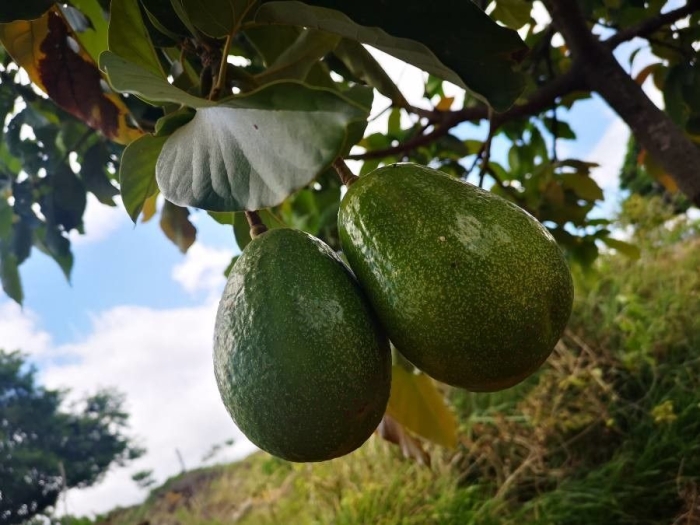Avocado
(Persea americana)
Avocado (Persea americana)
/
/

almeida angelica almeida
CC BY-SA 4.0










































































Estimated Native Range
Summary
Avocado trees are known for their edible fruit, which is a staple in various cuisines and valued for its healthy fats. They are partially self-pollinating and often grafted to ensure fruit consistency. In cultivation, they require a frost-free climate with minimal wind, as wind can dehydrate flowers and hinder pollination. While the ’Hass’ cultivar can tolerate temperatures down to −1 °C, cold-hardy varieties exist that can withstand −6.5 °C with minimal damage. Avocado trees thrive in well-aerated soils more than 1 meter deep and benefit from full sun exposure. They have moderate water requirements, with a notable water footprint of approximately 70 liters per fruit. Despite potential issues with frost and water consumption, avocados are popular for their ornamental value and can be grown as houseplants.CC BY-SA 4.0
Plant Description
- Plant Type: Tree
- Height: 30-60 feet
- Width: 20-30 feet
- Growth Rate: Rapid
- Flower Color: N/A
- Flowering Season: Spring
- Leaf Retention: Evergreen
Growth Requirements
- Sun: Full Sun
- Water: Medium
- Drainage: Slow, Medium, Fast
Common Uses
Bee Garden, Bird Garden, Butterfly Garden, Drought Tolerant, Edible*Disclaimer: Easyscape's listed plant edibility is for informational use. Always verify the safety and proper identification of any plant before consumption.
Natural Habitat
Highland forests of Central America and Mexico
Other Names
Common Names: Avocadobaum, Avocadopalme, Aguacate, Palto, Avocatier, Avokado, Alligator Pear, Pear, Zaboca, Abokado
Scientific Names: , Persea americana, Persea gratissima, Persea drymifolia, Persea americana var. drymifolia, Persea americana subsp. drymifolia, Persea floccosa, Persea americana var. nubigena, Laurus persea, Persea americana var. guatemalensis
GBIF Accepted Name: Persea americana Mill.